Minimal Audio’s Current might just be your new favourite synth
Current boasts multiple oscillators, filters and modulation options, a cloud-based content platform, and an award-winning built-in plugin suite
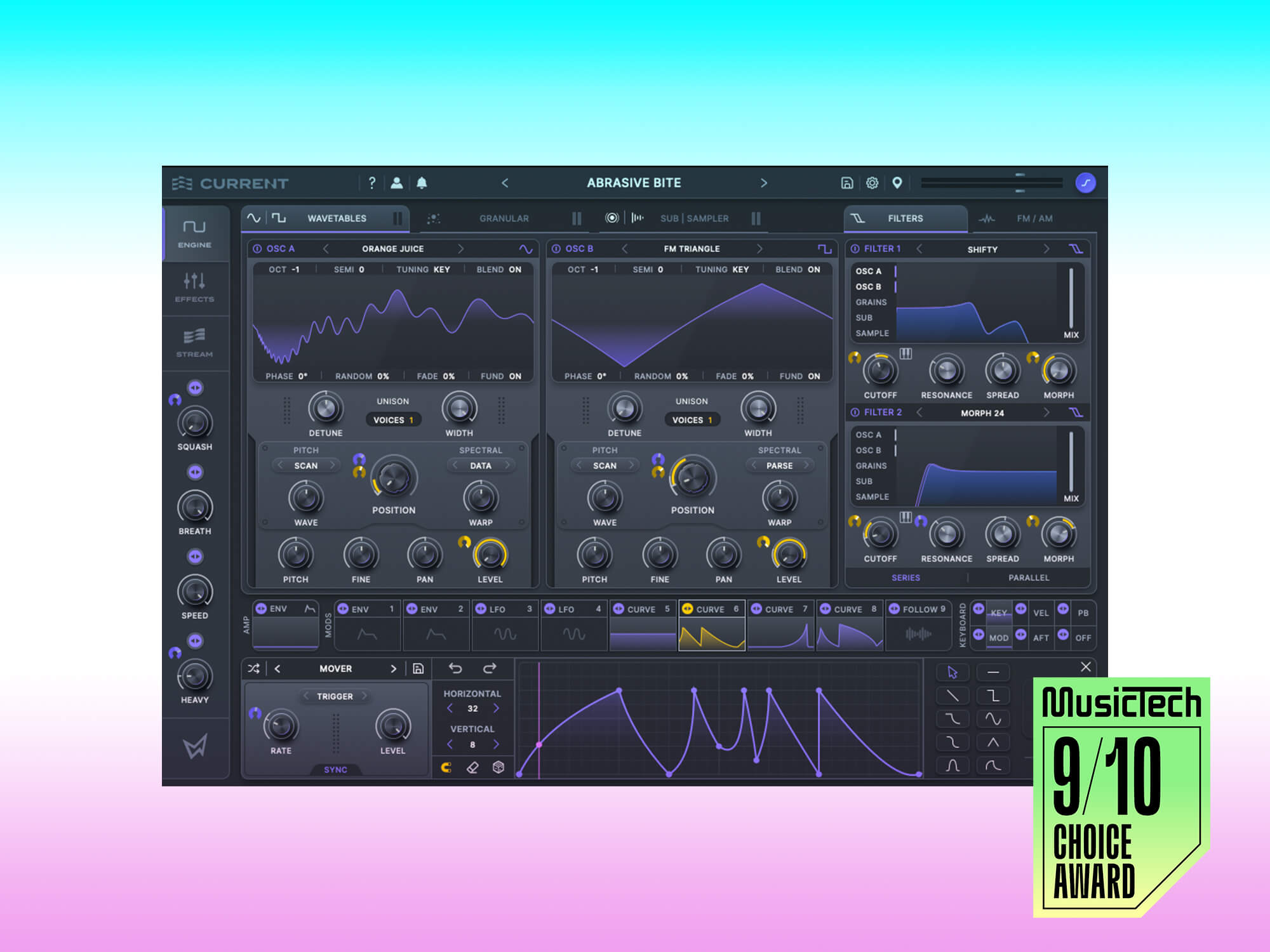
Minimal Audio Current
Review Overview
Our rating
9
Our verdict
⊕ Flexible engines, filters and modulation options
⊕ Exceptional effects section can give presets a finished sound
⊕ Sub-oscillator well integrated with rest of synth
⊕ Useful visual feedback helps with programming
⊖ Colour palette a little bland
⊖ With so many controls it could do with some roll-over help tips
⊖ Fairly high on CPU usage
$200 (perpetual licence), minimal.audio
$15/month, $120/year (rent-to-own, with access to all Minimal Audio plugins, updates and sound packs)
Minimal Audio kicked up quite the fuss in the industry upon announcing Current, its new flagship synth. The American company is best known for its feature-rich effects plugins primed for creative sound design but has turned its attention to sound creation, with a tremendous synth that includes multiple synthesis types, some exceptional effects, and a built-in cloud preset system. It’s not a cheap investment – as potential buyers quickly found out – but the high sound quality and flexible feature set make it more than a match for the competition.
Rocky start
Minimal Audio initially launched the synth as a subscription-only model. This decision was unanimously met with widespread negativity online, with many referencing the infamous subscription proposal made by Waves earlier this year. Thankfully, the company made a swift U-turn, apologised, and is now offering the synth as either a perpetual licence for $200, or as part of a rent-to-own scheme that also includes all of Minimal Audio’s other effects plugins, plus an expanding collection of samples, presets and wavetables.
These extras are accessed via a section of Current called The Stream, which doubles up as the instrument’s browser. You have tabs for presets, wavetables and sounds where you can preview, download and load individual files or entire packs. You can also switch between listing the files available on the cloud or on the local hard drive, and use a tagging system to search and favourite particular presets. It remains to be seen how this page will function in the upcoming perpetual version, but the company has said that you will be able to purchase additional packs as needed, so the functionality will probably remain largely the same.
Start your engines
Moving on to the main sound engines, you have two wavetable oscillators, a granular engine, a flexible sub-oscillator, and a sampler. Editing controls for each are fairly extensive, so we can’t list them all, but they strike a strong balance of being incredibly flexible but not totally overwhelming.
The wavetable oscillators have main controls for scanning Position, Pitch and Spectral, with the latter two offering around 20 different modes each that can dramatically change the resulting sound. There’s also a fat-sounding unison option with up to 16 voices and detune. Anyone who’s used a wavetable synth such as Xfer’s Serum will know what to expect here, as this type of synthesis is prime for patches that have movement such as neurofunk and d‘n’b basses, or evolving pads.
The granular engine is perhaps the most interesting of the bunch; it’ll let you load any sample and turn it into something beautiful and mysterious. You can choose up to eight layers of grains that dance around the playhead of the sample, and then edit the playback to loop and move in a multitude of ways. These can be synced to the DAW or move freely, and you can add stereo offset to create a nice, wide sound.
The excellent visual feedback helps to understand which parts of the sample are being triggered, as different dots, lines and regions sweep across the waveform. It’s quick and fairly easy to get interesting results, no matter what audio you throw at it.
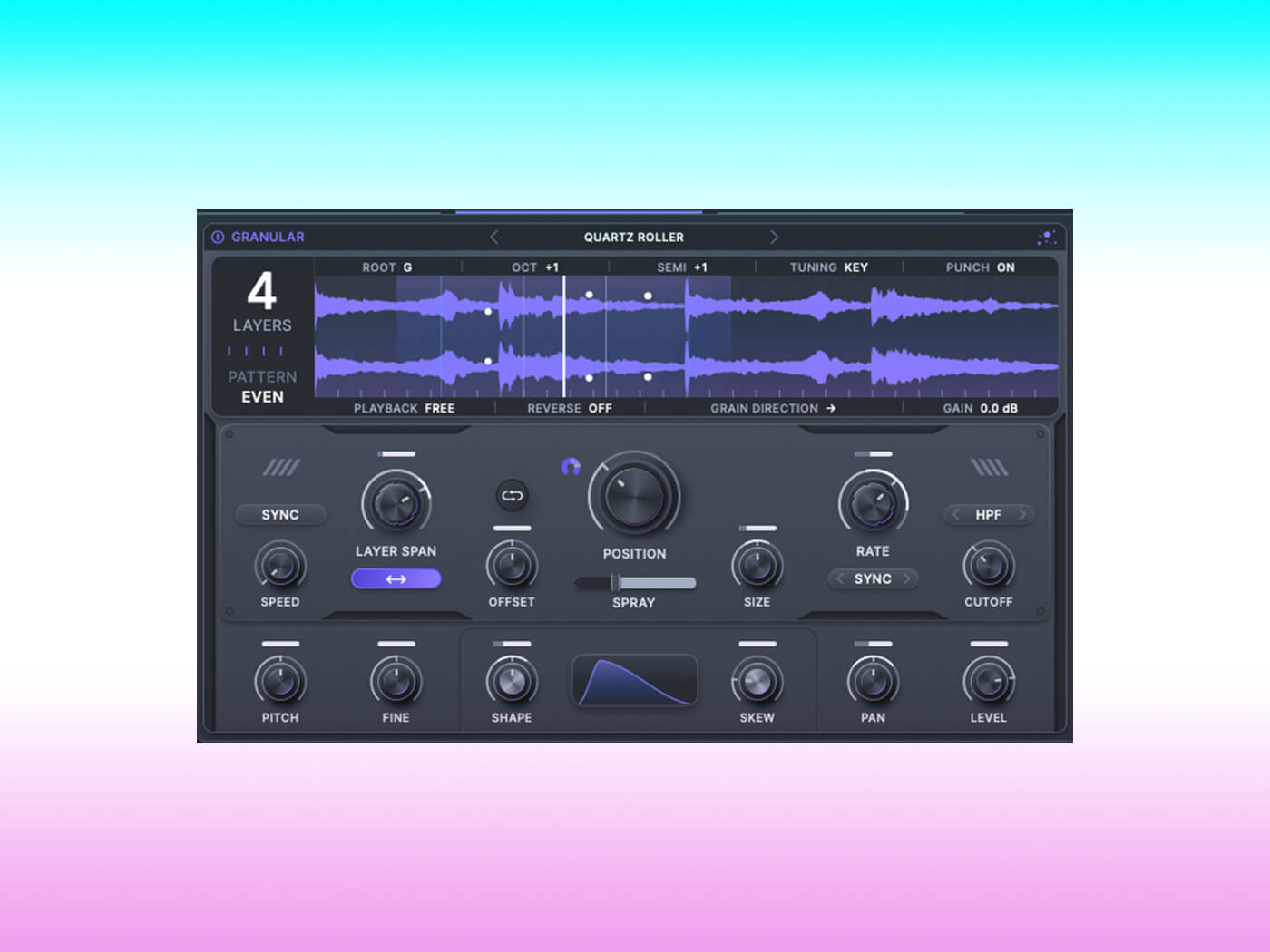
Sub level
Current’s impressive sub-oscillator is much more than a mere simple waveform. It generates a root note and then gives you the option to add up to eight partials to shape the sound and help it sit perfectly in the mix. You can tilt the harmonics and add subtle pitch dive, modulated detune, and six flavours of saturation.
It’s clear that Minimal Audio has thought carefully about how this oscillator can interact with the rest of the synth, with options to bypass the effects section for the sub, and to remove the fundamental from the wavetable oscillators to make space. You can also engage sub lock, which means the sub will play the same low octave, no matter how high up the keyboard you go. This is a great feature for basslines with a lot of movement up the keyboard, as you can dance around with different octaves using the other oscillators, whilst retaining a solid low-end.
The final oscillator is the sampler, which doesn’t do anything especially fancy, but is a nice option for adding more organic sounds or drums to your palette. It has options for looping, triggering and reversing, and can be run in classic Repitch mode, or in Flex mode with three time-stretching algorithms. There’s also a tab that shows frequency and amplitude modulation options for all five of the sound sources.
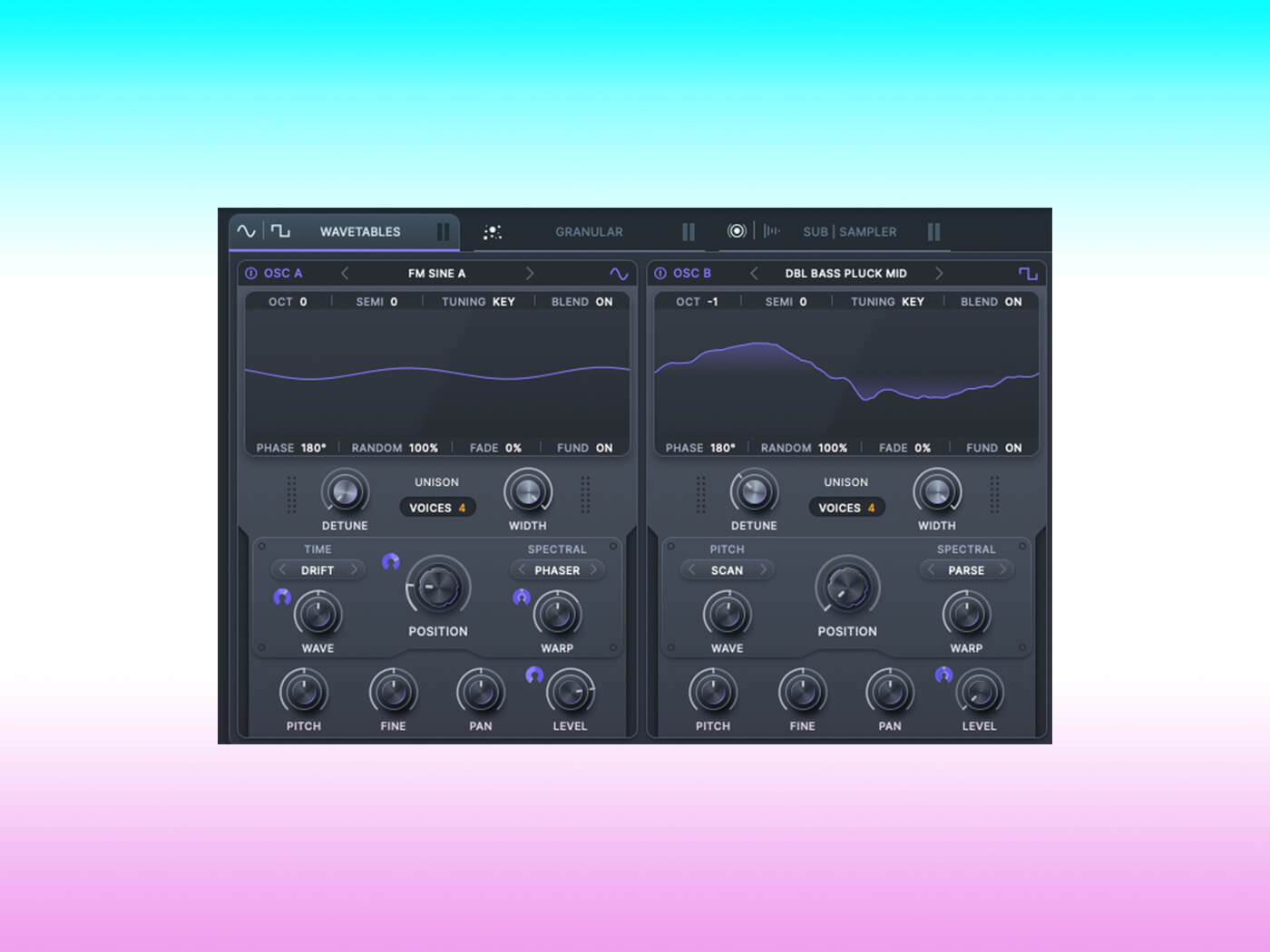
Make it move
All of the sources can be routed to the two filters, with a whopping 59 modes, a stereo offset, and the ability to run in series or parallel. The modes include various formant, comb, phaser and morphing settings that can dramatically alter the sound in interesting ways. And all of these oscillators and filters can be modulated via nine modulation slots to further shape your sound.
For each of the nine slots, you can choose from an AHDSR envelope with slopes, a simple LFO with a cool randomise function that can change with every repeat, a comprehensive curve editor for more complex sequences, and an envelope follower. There’s also an additional envelope that’s hard-wired to the amp.
Nine modulators should be enough for most preset building tasks, although some more hardcore sound designers may wish for a few more. To use them, you simply drag and drop to your control of choice and then adjust the ring that appears. You also have keyboard mod sources like keytracking, velocity and pitch bend, plus MIDI Polyphonic Expression (MPE) controls to help make your patches nice and reactive, and four assignable macros on the side of the user interface.
50 shades of grey
Speaking of which, the plugin screen is clean with useful visual feedback, but the commitment to a grey and purple colour scheme can make it feel a touch flat. You get a splash of colour when you select a modulator which highlights yellow along with a yellow ring to show the destination, but it feels like the more colourful mod system of something like the brand’s own Rift might have made it slightly easier to chase sources and destinations. That said, it’s possible they didn’t want it to look too similar to Vital and Pigments, two competing soft-synths.
The final part of the main page is the keyboard at the bottom, where you can select a key for your track, along with mono, legato and glide options. There’s also a comprehensive chord mode with plenty of presets and a strum function, plus a decent arpeggiator with multiple playback modes and preset sequences. It’s a useful feature to have these built-in and the chord presets are especially welcome to help with inspiration. You can also rearrange their order to give different playback results.
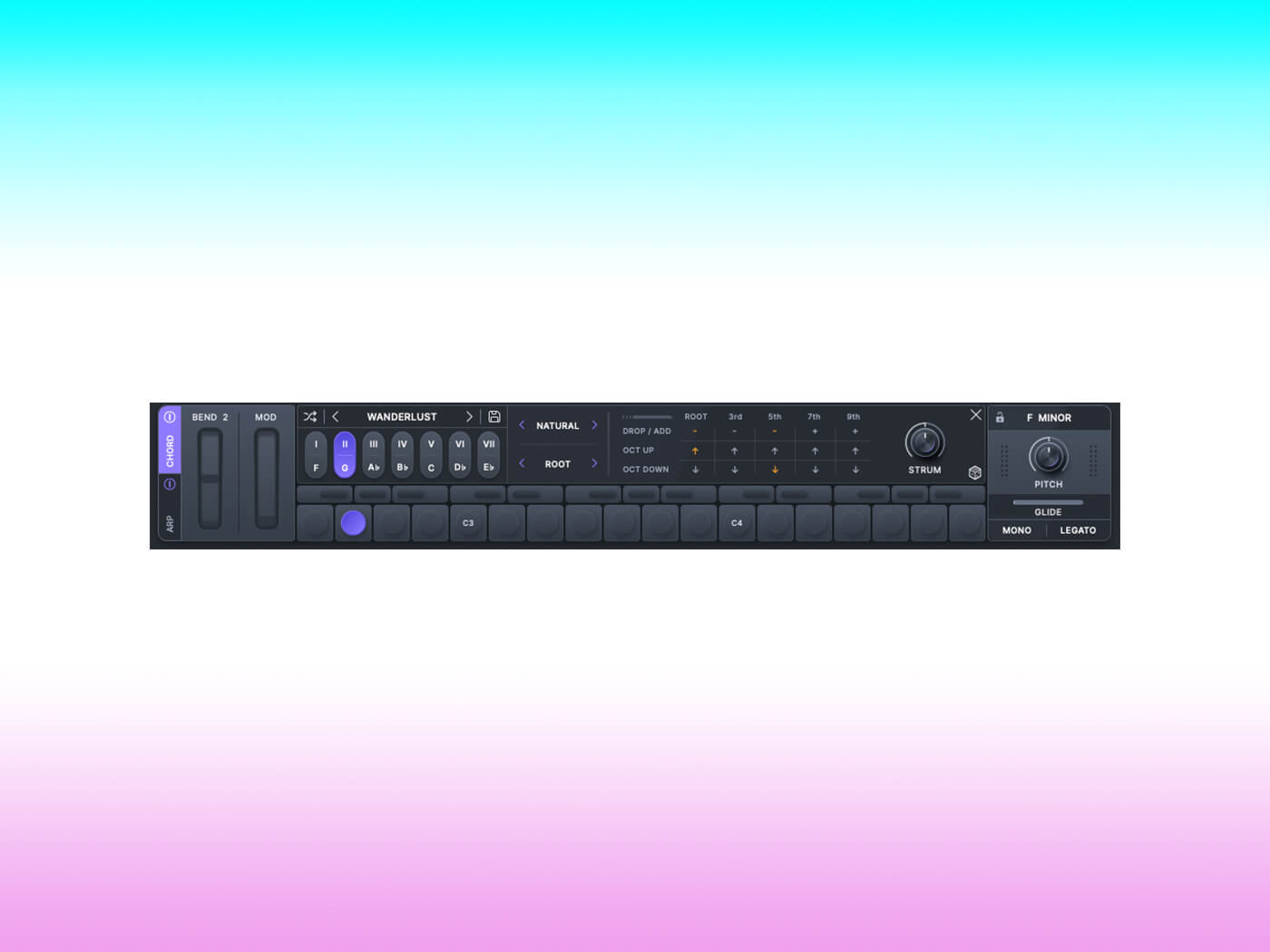
Finishing touch
We’ve saved the best for last: Current comes with an exceptional set of built-in effects that are essentially Minimal Audio’s separate plugins, reshaped to work inside the synth. These include Rift Distortion, Cluster Delay, Morph EQ and Fuse Compressor, plus an extra filter and new algorithms for chorus, phaser, and reverb.
It’s fairly customary to use separate effect plugins when building synth parts into a track, as most built-in effects don’t quite cut it. Not so here though, as these are essentially full plugins (each worth $49) with extensive options that can be used and rearranged across nine effects slots. To get a slightly better idea of what’s on offer, read our review of Rift and Morph EQ. Suffice to say, they’re all excellent sound-shaping tools, with some useful additions like built-in ducking on the delay and reverb effects.
Put to the test, we find it especially effective using Morph EQ to control resonances in a bass sound, and then to modulate its position using the key tracking so that you retain the perfect sound at different notes. We then use the Fuse multiband compressor (which is a little like Xfer’s OTT) to help get a balanced, upfront, and professional-sounding patch that doesn’t require any further processing. The extra bonus here is that you can use all the built-in modulation options to add movement to the effects, creating some pretty wild results. In fact, it would be great if Minimal Audio could open up the sidechain input of the plugin so you could use the effects rack on external audio sources. Also of interest, is the fact that the company has said that it will be adding more effects in the future.
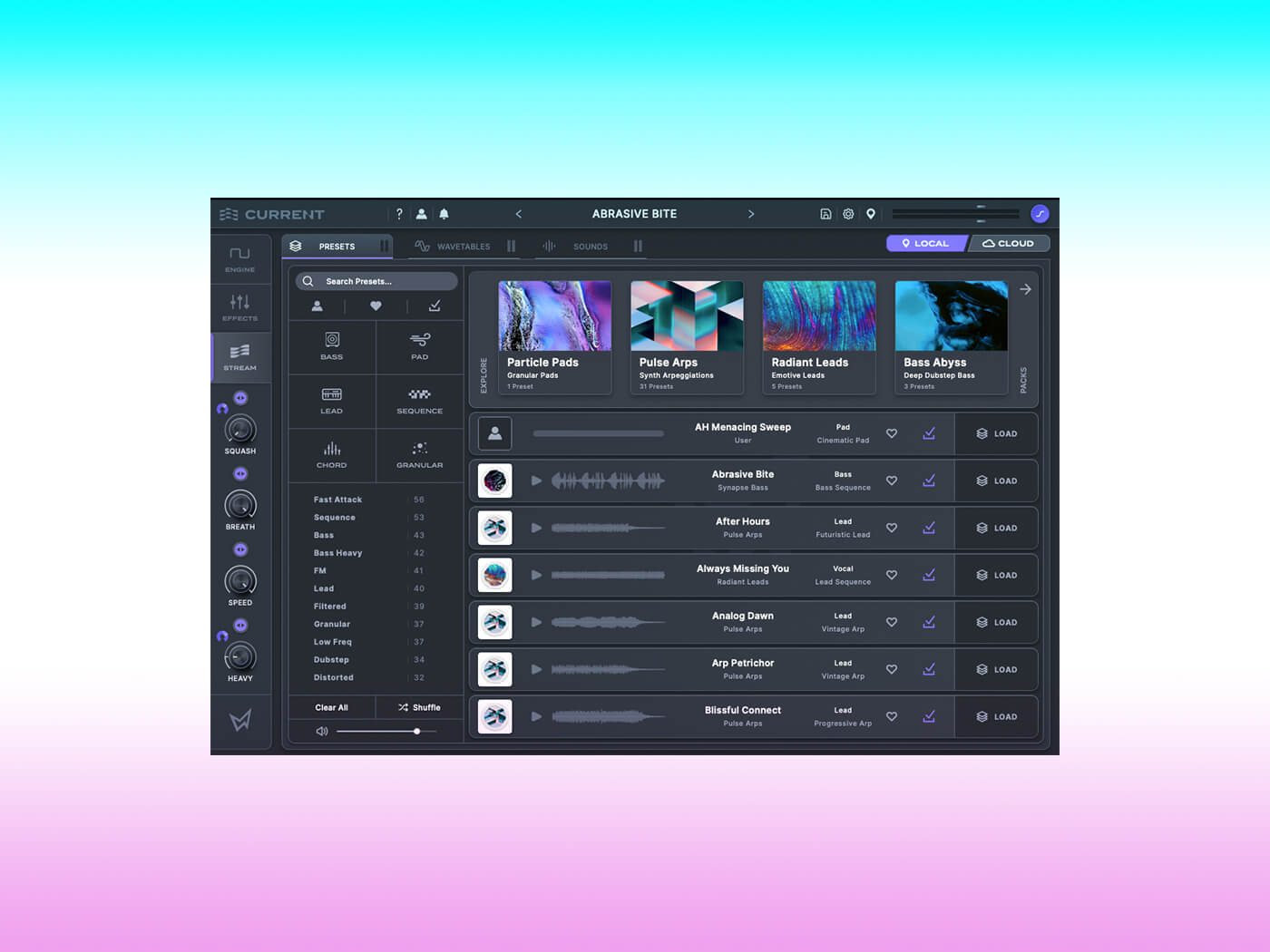
A new contender
Current is a highly flexible synth with well-designed sound sources and a superb effects section that makes it stand out from the competition. Although, this comes at the cost of fairly high CPU usage, especially if you run it at 4x oversampling. It might not be the synth you reach for more analogue-type sounds, but it does cinematic and modern, complex electronic sounds incredibly well. It’s certainly an exciting new contender in the synth arena.
Key features
- Hybrid virtual instrument with effects suite and cloud content platform
- Sound Engines: Wavetable; Granular; Sub; Sampler; Filter; FM/AM
- Modulation: AHDSR, LFO, curve, follow, MIDI and MPE
- MIDI Effects: Keyboard; chord; arpeggiator
- Effects Rack: Rift Distortion; Flex Chorus; Fuse Compressor; Cluster Delay; Morph EQ; Hybrid Filter; Ripple Phaser; Swarm Reverb
- The Stream cloud-connected content browser for presets, wavetables and samples
- New royalty-free content added every month
- 30-day free trial